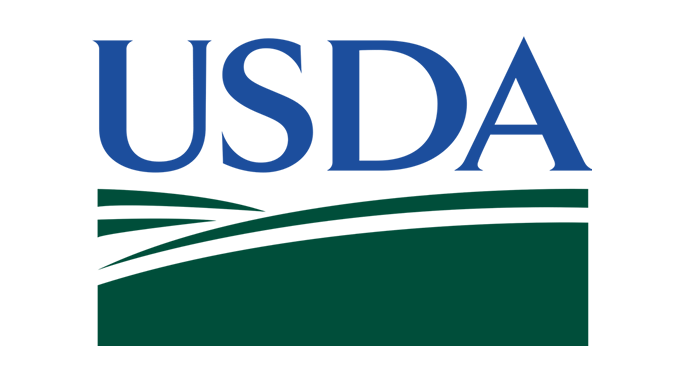Iowa Crop Progress & Condition Report – May 2

DES MOINES, Iowa (May 2, 2022) – Iowa Secretary of Agriculture Mike Naig commented today on the Iowa Crop Progress and Condition Report released by the USDA National Agricultural Statistics Service. The report is released weekly April through November.
“Despite another cold, wet week that slowed fieldwork, planting has begun in some areas of the state,” said Secretary Naig. “Looking ahead, short-term temperature outlooks suggest a shift toward much needed warmer weather but, unfortunately, with a wetter storm track.”
The weekly report is also available on the USDA’s website at nass.usda.gov.
Crop Report
Despite rain and cold conditions, Iowa farmers made progress planting corn and soybeans with 2.8 days suitable for fieldwork during the week ending May 1, 2022, according to the USDA National Agricultural Statistics Service. Fieldwork activities also included tillage, applying anhydrous and nitrogen, planting oats, and limited spraying.
Topsoil moisture condition rated 3 percent very short, 13 percent short, 68 percent adequate and 16 percent surplus. Subsoil moisture condition rated 8 percent very short, 22 percent short, 63 percent adequate and 7 percent surplus.
Despite continued cool soil temperatures, 9 percent of Iowa’s expected corn crop has been planted, 11 days behind last year and 9 days behind the 5-year average. Farmers in the western one-third of the Iowa had at least 3.7 days suitable for fieldwork and made more planting progress than those in the rest of the State. Four percent of the expected soybean crop has been planted, 9 days behind the previous year and 5 days behind the average. Sixty-three percent of the expected oat crop has been planted, almost 2 weeks behind last year and 1 week behind the 5-year average. Eighteen percent of the oat crop has emerged, 10 days behind last year and 6 days behind the average.
Pasture and hay growth were still slow. Livestock conditions were challenging, with muddy feedlots and pastures.
Weather Summary
Provided by Justin Glisan, Ph.D., State Climatologist, Iowa Department of Agriculture and Land Stewardship
April ended unseasonably cold and windy with near-normal to above-average rainfall statewide. Portions of southwestern and north-central Iowa reported up to two inches of above-average rainfall as an active weather pattern persisted over the Upper Midwest. With more clouds and precipitation present, colder than expected conditions continued with departures of up to nine degrees in northern Iowa as the statewide average temperature came in at 48.5 degrees, 5.6 degrees below normal.
Strong westerly winds and cloudy skies blanketed much of Iowa’s western half into Sunday (24th) afternoon with a mix of upper 40s and low 50s north to low 60s in the south. Overcast skies continued into Monday (25th) morning with temperatures near freezing in northern Iowa and in the low 40s farther south. A northwesterly wind held daytime highs in the 30s and 40s, well below normal for late April, with a statewide average high of 45 degrees, 18 degrees below normal; Forest City (Winnebago County) observed 35 degrees, 26 degrees below the 30-year climatology. Skies gradually cleared west to east as winds died down and became directionally variable. Tuesday (26th) morning temperatures dipped into the low 20s northwest to low 30s southeast. A surface boundary across central Iowa created a spectrum of afternoon temperatures, ranging from the mid-40s northeast to low 70s southwest. Winds shifted to the east through the overnight hours as skies remained cloudless. Morning lows at 7:00 am on Wednesday (27th) stayed in the low 50s in southwest Iowa as a weak warm front lifted over the region and shifted winds to a southerly direction; conditions in northern Iowa were colder with temperatures hovering in the mid 30s. Very warm temperatures were observed south of the boundary with afternoon conditions reaching into the upper 70s and low 80s. An area of light to moderate showers formed in northeastern Iowa around midnight and shifted into eastern Iowa through early Thursday (28th) afternoon. Southerly winds helped temperatures rise into the mid to upper 70s in southern Iowa with clouds increasing later in the evening. Rain totals from northern to eastern Iowa were generally around a few tenths of an inch though 10 stations measured an inch or more; Estherville (Emmett County) reported 1.72 inches while Mason City (Cerro Gordo County) observed 1.30 inches.
A secondary cluster of showers and thunderstorms pushed into southwestern Iowa ahead of a low pressure system early on Friday (29th). Rain showers moved east through the state as temperatures only reached into the low to mid-50s. As the low’s attendant cold front propagated into western Iowa during the early nighttime hours, strong to severe thunderstorms fired along the cold front and produced a handful of severe straight-line wind reports in the southwest corner. The line of storms stretched into northwestern Iowa and swept across Iowa leaving behind measurable rainfall statewide. The line dissipated across eastern Iowa after daybreak on Saturday (30th). Event totals were above 0.25 inch at most reporting stations with several stations observing at least an inch; Lamoni (Decatur County) measured 1.92 inches while the statewide average rainfall was 0.38 inch. The low center continued to spin along the Iowa-Minnesota border through the day with temperatures hovering in the upper 40s and low 50s. Overcast conditions persisted overnight as the system moved into the Great Lakes region. Thick stratus clouds held morning temperatures in the low to mid 40s with some lingering light showers reported early Sunday (1st) morning.
Weekly precipitation totals ranged from 0.29 inch at Jefferson (Greene County) to 2.57 inches at Lamoni Municipal Airport (Decatur County). The statewide weekly average precipitation was 0.95 inch while the normal is 0.86 inch. Little Sioux (Harrison County) and Oakland (Pottawattamie County) reported the week’s high temperature of 82 degrees on the 27th, on average 16 degrees above normal. Cherokee (Cherokee County) and Sioux City Airport (Woodbury County) reported the week’s low temperature of 19 degrees on the 26th, on average 20 degrees below normal. Four-inch soil temperatures were in the upper 40s to low 50s across a majority of Iowa as of Sunday.




